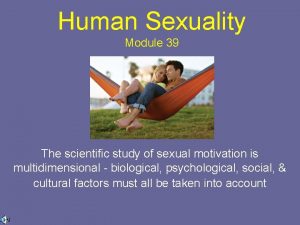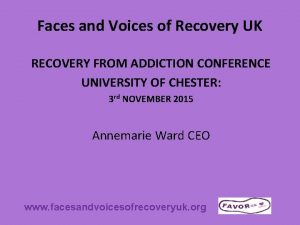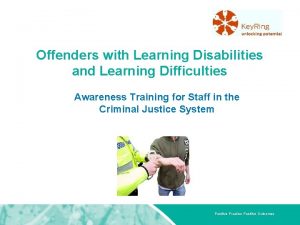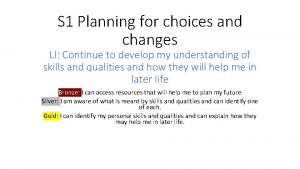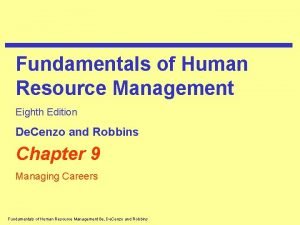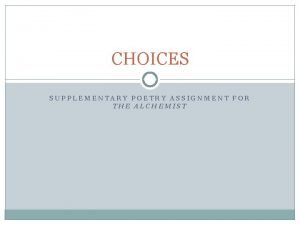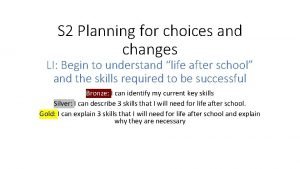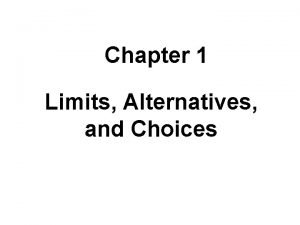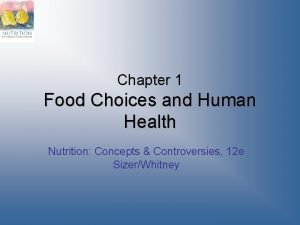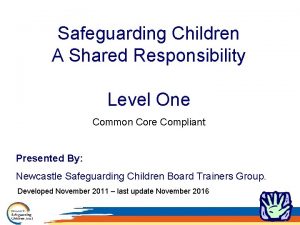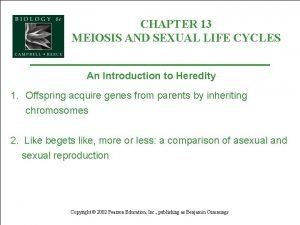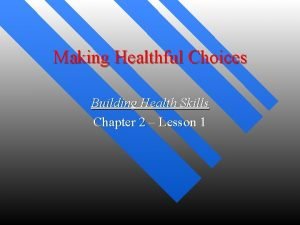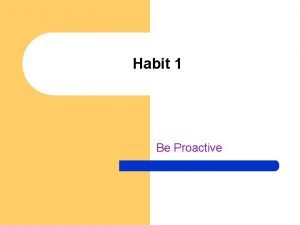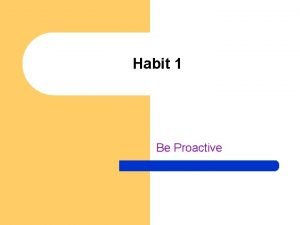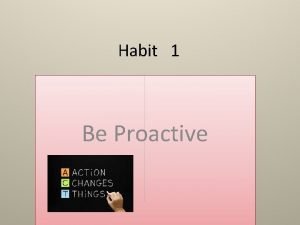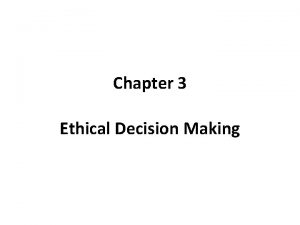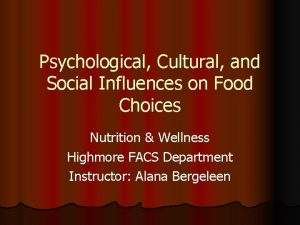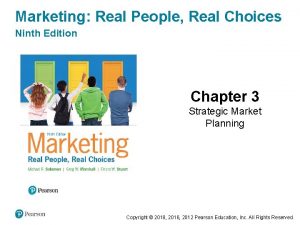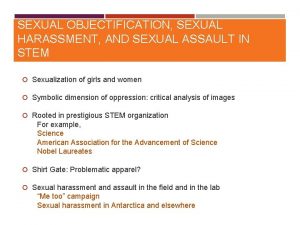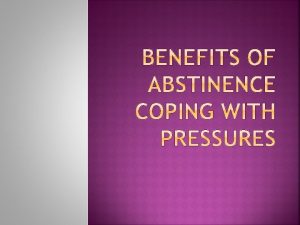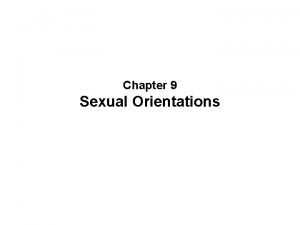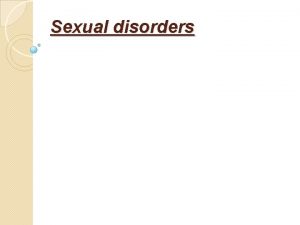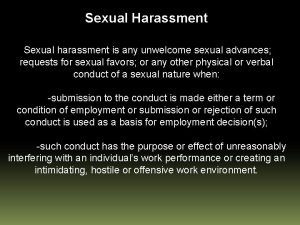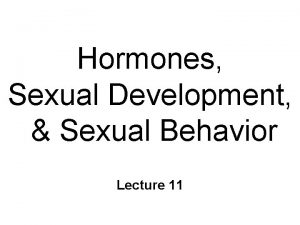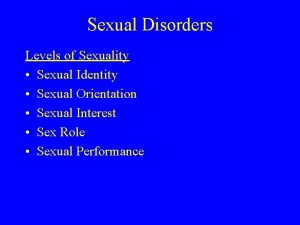Positive Voices Positive Choices Module 10 Sexual and




















































































- Slides: 84

Positive Voices, Positive Choices Module 10: Sexual and Reproductive Health 1

Module 10 Learning Objectives After completing this module, participants will be able to: n Discuss different forms of sexual behavior and expression n Reflect on their own attitudes and values n Understand why it is important to be non-judgmental n Describe sexual and reproductive body parts n Provide information on safer sex, contraception, and dual protection n Demonstrate condom use n Understand prevention and treatment of STIs n Provide information on PMTCT n Discuss the needs of adolescents who have experienced sexual abuse and gender violence 2

Session 10. 1 Let’s Talk About Sex! 3

Discussion Questions n What is sex? n What is sexuality? n How do adolescents express their sexuality? n What challenges do adolescents face with sexual and reproductive health? 4

Louisa Says…. It is important for Peer Educators to be open and honest and NONJUDGEMENTAL about sex and sexuality! 5

Exercise 1 SRH Values Clarification: Large group exercise 6

Session 10. 2 Adolescent Sexuality and HIV 7

Session 10. 2 Objectives After completing this session, participants will be able to: n Define key terms related to sex, sexuality, sexual orientation, and sexual identity n Identify potential effects of HIV on sexuality among adolescents 8

Exercise 2 Key Terms about Sex, Sexuality, and Sexual Orientation: Small group work and large group discussion 9

Exercise 2: Key Terms Sex (verb) Intimacy Heterosexuality Sex (noun) Love Homosexuality Vaginal sex Sexual arousal Bisexuality Anal sex Social roles Transvestism Oral sex Body image Transsexual Sexuality Genitals Transgendered Gender roles Gender Relationship Sexual abuse 10

Exercise 2: Debriefing n What did we learn? n Key points: § Even we, as health workers, sometimes find it difficult to talk about sex and sexuality. § Being able to comfortably talk about sex and sexuality within a professional context is the first step toward being able to initiate SRH discussions with clients. § Our first priority as health workers is to provide care and support to our clients. This means never judging them or making them feel abnormal. 11

Sex (as in Sexual Activity) n Also referred to as “intercourse” or “sexual intercourse, ” and includes: § Inserting fingers or objects into the vagina or anus § Masturbating (alone or with a partner) § Having sex with men, women, or both men and women § Vaginal sex: when the penis or fingers go into the vagina § Anal sex: when the penis or fingers go into the anus § Oral sex: when a person kisses or licks his or her partner’s penis, vagina, or anus 12

Unsafe Sex n Unsafe sex is any kind of sex that puts a person or a person’s sexual partners at risk of getting an STI (including HIV) or unwanted pregnancy. n HIV is mainly spread to adolescents and adults through unsafe sex. n Honest, factual discussions about sex and sexuality can provide adolescents with the information they need to protect themselves and their partners from STIs and unplanned pregnancy. 13

Sexuality n Is more than sex and sexual feelings n Includes all the feelings, thoughts, and behaviors of being a girl, boy, man, or woman, including feeling attractive, being in love, and being in relationships that include sexual intimacy and physical sexual activity n Exists throughout life and is a component of the total expression of who we are as human beings n Is a part of us from birth until death n Is constantly evolving as we grow and develop For more information on key terms related to sexuality, see your Participant Manual. 14

Discussion Questions n What are some of the ways adolescents may express their sexuality? n What challenges do you think adolescents may face in expressing their sexuality? See Appendix 10 A: Journal Article, which presents data on sexual behaviors and desires among ALHIV in Uganda. 15

Remember: § Sexual behaviors include much more than just penisvagina sex. § If you do not talk about sex and sexual behaviors with clients, they may not get the information, skills, and supplies they need to protect themselves and their partners. § We should not project our own values onto clients. ALHIV should always be made to feel comfortable talking about their sexual concerns, questions, and behaviors — and that there is no risk of judgment. 16

Discussion Questions n How many of your clients are homosexual or bisexual? n As a health worker, do you feel you provide these clients with the support they need? Why or why not? 17

Sexual Orientation and Identity n Adolescence is a time of sexual experimentation and defining one’s sexual identity. n An adolescent who realizes that he or she may be gay, bisexual, or transgendered may feel isolated and depressed. It is the health worker’s responsibility to: § Stress that homosexual, bisexual, and transsexual/ transgendered behaviour is NORMAL. § Help the adolescent cope with his or her sexual orientation and accept his or her feelings. n You do not have to be an expert to help. Be willing to listen in a non-judgmental way and to provide any necessary referrals. For more information on key terms related to sexual orientation and identity, see your Participant Manual. 18

Creating a Gay-Friendly Atmosphere § § Homosexual and bisexual ALHIV are particularly vulnerable: § They may experience profound isolation and fear of discovery § They are more likely to experience harassment and violence and are at higher risk of dropping out of school, being kicked out of their homes, and experimenting with substances at an early age Reassure youth that they will not be judged and that they are welcome in the clinic Ensure that all youth feel comfortable and are provided with the care, treatment, and support that they need Know where to refer youth for peer and other forms of support 19

Discussion Questions n In what way do you think HIV might affect the sexuality of adolescent clients? 20

Effects of HIV on Sexuality Among ALHIV affects everyone differently. Some ALHIV may experience 1 or more of these effects, and others may not experience any: n Adolescents may be preoccupied with their developing bodies and body image; may compare themselves to their peers n Adolescents wonder and worry about their level of sexual attractiveness n ALHIV may have lower self-esteem than their peers; may have increased anxiety about sexuality, sexual relationships, and sexual and reproductive health n ALHIV may have concerns about if/how they can have safe sexual relationships; often have fears related to disclosure 21

Effects of HIV on Sexuality Among ALHIV (Continued) n ALHIV may have concerns and questions about being able to have children n ‘Looking different’ can be very traumatic for adolescents: § ALHIV may begin puberty later and grow and develop more slowly § ALHIV are subject to many illnesses, conditions, and drug side effects that may affect the way they look n Adolescents who acquired HIV through sexual abuse may have unresolved issues from the trauma related to the abuse 22

Sexual Abuse n Has anyone worked with an adolescent client who had experienced sexual abuse? n If so, how did you handle it? 23

Sexual Abuse (Continued) n Definition: Forced, unwanted, improper, or harmful sexual activity that is inflicted on another person n Many victims of sexual abuse are adolescents. n Research has documented that 7– 34% of girls and 3– 29% of boys experience sexual abuse. n The most frequent victims of coerced sex are adolescent girls. n Sexual abuse can happen inside or outside the home; it can be perpetrated by a partner, family member or friend, or stranger. 24

Sexual Abuse (Continued) n Teach young people that they have a right to grow up and live in an environment that is free of physical and sexual violence. n Violence should never be considered a “normal” part of everyday life. n Recognizing sexual abuse can be difficult and is rarely a straightforward task. 25

Sexual Abuse (Continued) Identifying sexual abuse: n Often, there is no physical evidence that an adolescent has been sexually abused. n Changes in the adolescent’s behavior are a far more common result. n The most reliable and common indicator of sexual abuse is an adolescent’s disclosure of the abuse. n See Appendix 10 B: Adolescent Sexual Abuse. 26

Sexual Abuse (Continued) n Sexual abuse should be investigated using a multidisciplinary team approach. n Provide package of sexual and gender-based violence (SGBV) services: § HIV testing and PEP, following national guidelines § A medical exam, including the collection of forensic evidence and § § § an STI assessment The provision of needed medical treatment Pregnancy testing and emergency contraception (for females) Counseling and support A temporary place to stay, if needed for safety A link to the police for an investigation of the assault 27

Exercise 3 OK for Me? : Large group exercise and discussion 28

Exercise 3: Group Discussion Questions n Are you surprised by the placement of some of the cards? Which ones surprise you? n Does the placement of the cards suggest that some sexual behaviors are “right” while others are “wrong? ” How do you feel about that? n Are there behaviors that are not OK under any circumstances? n What does this activity tell us about how adolescent clients might feel when we ask them about their sexual behaviors? n How can we make our adolescent clients feel more comfortable talking about their sexual preferences and behaviors at the clinic? 29

Exercise 3: Debriefing n What did we learn? n Key points: § We all have our own values and attitudes about sexual behaviors. § However, we must be able to talk openly and comfortably about sex and sexuality with out adolescent clients. § Being open, non-judgmental, and truthful about sexuality makes it easier for adolescent clients to accept themselves and to reduce their risk. 30

Questions or comments on this session? 31

Session 10. 3 Supporting Adolescent Clients to Practice Safe Sex 32

Session 10. 3 Objectives After completing this session, participants will be able to: n Define safer sex and discuss how to empower adolescent clients to practice safer sex 33

Discussion Question n How is HIV transmitted from one person to another during sexual activity? 34

Understanding Risk n For each behavior I read out loud, decide how risky this activity is in terms of spreading/getting HIV and other STIs. n Volunteer(s) will write each behavior on the appropriate flip chart: § NO RISK § LOW RISK § MEDIUM RISK § HIGH RISK 35

Understanding Risk (Continued) n HIV is transmitted through four body fluids: 1. Semen 2. Vaginal secretions 3. Blood 4. Breast milk n There is a risk of HIV transmission if any of these are passed from one person to another AND: § The body fluid is from a person infected with HIV § The body fluid enters the bloodstream of another person 36

Understanding Risk (Continued) n There are many ways to share sexual feelings that are not risky. “No risk” activities § Hugging § § Kissing (including “French kissing”) § § Holding hands § Massaging § Bathing or showering together Rubbing against one other with clothes on Sharing fantasies § Self-masturbation 37

Understanding Risk (Continued) Low risk activities n Masturbating your partner or masturbating together, as long as males do not ejaculate near any opening or broken skin of their partner n Using a male or female latex condom during every act of sexual intercourse n Using a barrier method for oral sex or for any mouth-to- genitals or mouth-to-anus contact n Sharing sexual toys (rubber penis, vibrators) without cleaning them 38

Understanding Risk (Continued) Medium risk activities Oral sex without a latex barrier n § HIV transmission risk through oral sex is generally low, but there is some risk, especially if the person has an STI or cuts/sores in the mouth or on the genitals High risk activities n Unprotected (no male or female condom) anal or vaginal sex 39

Discussion Question n What does “safer sex” mean? 40

What Do We Mean by “Safer Sex? ” n Safer sex includes the range of ways that people can protect themselves and their partner(s) from HIV, other STIs, and unintended pregnancy. n Practices that prevent body fluids from passing from 1 person to another n Because ARVs reduce the amount of virus in body fluids, safer sex includes maintaining excellent adherence to ART. n Includes “no risk” and low risk activities 41

ART and Safer Sex n PLHIV who are taking ART are much less likely to pass HIV to their uninfected partners. § According to an HPTN study (2011), there was a 96% reduction in risk of HIV transmission when the partner living with HIV was taking ART. n “Altruistic adherence”: Now there is yet another reason to adhere to ART — to protect sexual partners from HIV. n PLHIV on ART should still practice safer sex! 42

ART and Safer Sex (Continued) Role of health workers: n During adherence counseling, inform clients of the additional benefits of excellent adherence: § Not only does it improve the quality and length of the client’s life, but it reduces the risk of transmission to his or her unifected sexual partner(s) 43

Discussion Questions n Are male and female condoms currently offered to ALL adolescent clients at your clinic? Why or why not? n Are male and female condoms available in a private space in the waiting area so adolescent clients do not have to ask for them? n What has been your experience discussing and demonstrating condom use with adolescent clients? What is challenging? 44

More on Condoms § Condoms reliably prevent STIs, HIV and unwanted pregnancy. Myths about condoms: 1. Condoms are only for sex workers and promiscuous people. § Health worker strategy: Promote condoms for young people as a way to protect themselves and their partners from HIV and STIs. 2. Condoms make sex less enjoyable. § Health worker strategy: Reframe condoms as part of pleasurable foreplay and emphasize that sex with condoms can relieve worries about unplanned pregnancy and HIV transmission. 3. If both partners have HIV, they do not need to use condoms. § Health worker strategy: Explain that condoms reduce the risk of transmitting new HIV strains to one another and prevent the spread of STIs and unwanted pregnancy. 45

Brainstorming n Define the term “dual protection. ” 46

Dual Protection n Preventing STIs, HIV, and unwanted pregnancy at the same time n Dual protection strategies include: § Abstinence § “No risk” and low risk activities § Dual method use — using male or female condoms to protect against STIs and a second method (often a hormonal method) to protect against unplanned pregnancy § Being in a monogamous relationship in which both partners are free of STIs and at least one partner is using effective contraception § Using male or female condoms 47

“If we’re both HIV-positive, why do we need to use a condom? ” n Different strains or types of HIV can be passed between two HIVinfected people. § This is referred to as “re-infection. ” § The new strain of HIV might not respond to the ART regimen that the person is currently taking (in other words, the strain might be drug resistant), making treatment more difficult. n It is also important to use condoms to prevent unwanted pregnancy and other STIs. 48

How To Use a Male Condom See your Participant Manual for illustrations. 1. 2. 3. 4. 5. 6. 7. Check the condom package (expiry date and that the package is undamaged). Open the package. Do not use your teeth. Pinch the tip of the condom to keep a little space at the tip. This will hold the semen and prevent the condom from breaking. Hold the condom so that the tip is facing up and so it can be rolled down the penis. (Make sure it is not inside out!) Put it on the tip of an erect (hard) penis (only use condoms on an erect penis) and unroll it down to the bottom of the penis. After ejaculation (coming), hold the rim of the condom while the man removes his penis, without spilling the semen. The penis must be removed while still hard to make sure the condom does not fall off. Remove the condom and tie it in a knot to avoid spilling. Throw it away in a latrine or bury it. Do not put it in a flush toilet. 49

How To Use a Female Condom See your Participant Manual for illustrations. 1. 2. 3. 4. 5. 6. 7. 8. Check the condom package (expiry date and that the package is undamaged). Open the package. Do not use your teeth. Find the inner ring at the closed end of the condom. Squeeze the inner ring between your thumb and middle finger. Guide the inner ring all the way into the vagina with your fingers. The outer ring should stay outside of the vagina, covering the vagina’s lips. Guide the penis through the outer ring so that the penis is inserted into the female condom. After the man ejaculates (comes) and before the woman stands up, squeeze and twist the outer ring to keep the semen inside the pouch and pull the pouch out. Put the used condom in a latrine or bury it. Do not put it in a flush toilet. Adapted from: Burns, A. , Lovich, R. , Maxwell, J. , & Shapiro, K. 1997. Where women have no doctor: A health guide for women. Berkeley, CA: The Hesperian Foundation 50

Exercise 4 Condom Demonstration: Return demonstration and large group discussion 51

Exercise 4: Debriefing n What did we learn? n Key points: § Provide condoms to ALHIV and demonstrate how they are used. § Support adolescent clients to use condoms: § Teach them to negotiate safer sex. § Respond to common questions and any complaints that they or their partners have about condoms. § Even if a client is not yet sexually active, prepare him or her with the facts, including how condoms can prevent HIV transmission, re-infection, STIs, and unintended pregnancy. 52

Discussion Questions n What are some of the reasons adolescents may not practice safer sex? n Do you think there are specific reasons some ALHIV do not practice safer sex, despite the risks? Explain. n What can we do to make sure that ALL adolescent clients have access to condoms, and also have the skills and knowledge to use them? 53

Reasons Why Adolescents May Not Practice Safer Sex Ignorance n They think they are not vulnerable to HIV, HIV re-infection, pregnancy, and STIs. n They lack adequate or accurate information about safer sex. n They have heard misinformation or myths about methods and their side effects. n They do not know that methods are available; do not know where, how, or when to get them; or do not know which methods can be used by ALHIV. n They lack of awareness of pleasurable alternatives to risky sex. 54

Reasons Why Adolescents May Not Practice Safer Sex (Continued) Denial n “It just happened. ” (They did not expect to have sex). n “I only had sex once. ” n “Sex should be spontaneous. ” n “My friends are not using protection, so why should I? ” n Do not think they will get pregnant or an STI, or think that there is only a small chance of passing HIV to a partner during sex 55

Reasons Why Adolescents May Not Practice Safer Sex (Continued) Lack of Access n Access to contraceptive services for adolescents is often limited by law, custom, or clinic/institutional policy. n Availability and cost may restrict access. n There may be an irregular supply of methods available. n Sex happened spontaneously and a method was not available when needed. n Health worker attitudes toward contraception may prevent distribution of protective methods to adolescents. 56

Reasons Why Adolescents May Not Practice Safer Sex (Continued) Coercion n One of the partners wants to get pregnant. n One of the partners will not let the other use protection. n One of the partners forces the other to have sex. n One of the partners has the attitude that condoms ruin sex or are unromantic. n There is pressure from family members to conceive. 57

Reasons Why Adolescents May Not Practice Safer Sex (Continued) The “I don’t care” effect n ALHIV may feel that because they are already HIV-infected, there is no need to protect themselves. This might be especially true if both partners are HIV-infected. n ALHIV may be depressed and have lost hope (“I don’t care, I already have HIV, so why not take risks? ”) 58

Reasons Why Adolescents May Not Practice Safer Sex (Continued) Fear n Fear of rejection n Fear of people knowing their HIV- status n n Fear that something may go wrong if they start using contraceptive methods Fear of lack of confidentiality where methods can be obtained n Fear of discovery of sexual activity by parents or peers n Fear of using something new n n Fear of side effects Fear of being asked questions if they request contraception n Fear of where to keep protective methods so that no one sees them n Fear of being labeled “cheap” or “loose” 59

Reasons Why Adolescents May Not Practice Safer Sex (Continued) Embarrassment n Service providers and pharmacists are sometimes judgmental and/or moralistic about adolescent sexual activity, especially for ALHIV. § Embarrassment over buying or requesting contraception at retail outlets or clinics n Embarrassment related to suggesting condom use in the “heat of the moment” 60

Reasons Why Adolescents May Not Practice Safer Sex (Continued) Other Factors n Lack of communication skills and expertise to discuss or negotiate protection n A desire to conceive; or a lack of a firm decision about conception n Side effects of oral contraception preventing use n Belief that partner “is taking care of the protection” n Sexual activity is often unplanned and protection is often unavailable n Uncertainty about how or where to dispose of condoms properly and privately n Belief that suggestion of protection implies mistrust of partner 61

Questions or comments on this session? 62

Session 10. 4 Integrating Sexual Risk Screening, Risk Reduction Counseling, and STI Services into Adolescent HIV Services 63

Session 10. 4 Objectives After completing this session, participants will be able to: n Conduct sexual risk screening and reduction counseling with adolescent clients n Explain the importance of and provide STI screening and treatment for adolescent clients n List ways to make SRH and other clinical examinations more adolescent-friendly 64

Brainstorming n What does “positive prevention” mean? 65

Positive Prevention n ALHIV need access to accurate information about HIV and STI transmission to address their concerns about sexuality, dating, future childbearing, disclosure, and transmission risk. n Help ALHIV understand the transmission risk of certain activities and provide guidance on: § Reducing risky behaviour § Maintaining good sexual and reproductive health § Preventing new HIV infections Positive Prevention Remember: it is crucial that SRH support and counseling are provided in a non-judgmental manner! 66

Discussion Questions n Do you conduct sexual risk screening and risk reduction counseling with adolescent clients? n What questions do you ask to screen for sexual risk? n What questions do you ask when counseling on risk reduction? 67

Sexual Risk Screening and Counseling n Start asking ALHIV routine screening questions as early as possible. n Build trust with clients: § Start addressing sexuality with them before they become sexually active. § Begin with safer topics, such as the physical changes of puberty. § When meeting with caregivers, begin by exploring their expectations about their child’s sexual activity; then use these expectations to begin providing guidance. n By the time clients are 12 years old, begin seeing them separately from their caregivers for at least part of each appointment. 68

Overview of the Discussion n Explain what information can and cannot be kept confidential. n Always ask about sexual behaviour, rather than sexual identity. n Use good communication and counseling skills. n Avoid using any labels not first used by the client. n Avoid making assumptions about the client, including his or her knowledge, behavior, sexual orientation, etc. n If a discussion is awkward, respect a client’s clues that further talk is unwanted. 69

Sexual Risk Screening n See Table 10. 1. n Questions: § Is the client sexually active? § If yes, with whom? § What are the client’s sexual practices? 70

Risk Reduction Counseling n See Table 10. 2. n Counseling topics: § Assess knowledge § Discuss options for sexual risk reduction § If an option, discuss abstinence § Discuss condoms § Role play to encourage condom use § Encourage disclosure 71

Discussion Question n Why do you think adolescent clients are vulnerable to STIs? 72

Biological Factors n The adolescent female genital tract is not fully mature and is more biologically susceptible to STIs than that of older women. n ALHIV may have weakened immune systems. n Females often do not show signs or symptoms of chlamydia and gonorrhea, so infection may go untreated, increasing risk of HIV acquisition. 73

A Lack of Knowledge n Adolescents often lack basic knowledge about STI symptoms, transmission, and treatment. n Adults are often uneasy talking with adolescents about STIs and sexual health. They often think adolescents should not be having sex in the first place. 74

Factors Related to Adolescence n Sex is often unplanned and spontaneous, which makes condom use less consistent. n Adolescents may have multiple, short-term sexual relationships. n Young women are more at risk of sexual violence and exploitation and are more likely to lack formal education, the ability to negotiate safer sex, and access to SRH information and services. n Adolescents may engage in high-risk behaviours that increase the risk of STIs. n Young men may have first sexual experiences with commercial sex workers and young women my have them with older men. n Adolescents may be afraid to seek treatment for STIs because they fear stigma and discrimination. 75

Discussion Question n What can health workers do to make clinical examinations more adolescent-friendly and less stressful for ALHIV? 76

Making SRH and Other Clinical Procedures More Adolescent-Friendly n Explain exam procedures during each visit, and before beginning each step n Respect the adolescent client’s privacy n Reassure the client about confidentiality n Give reassurance throughout the exam n Give feedback in a nonjudgmental manner n Offer for exam to be performed by a health worker of the same sex, or else to have a health worker of the same sex present during the exam n Delay pelvic exams, unless client is at risk of STIs or pregnancy, or has multiple sexual partners n If a pelvic exam is necessary, address all of the client’s concerns 77

Discussion Questions n At your facility, what STI screening and treatment services are routinely offered to adolescent clients? n If STI services are not currently part of routine HIV care and treatment for ALHIV, why not? n What are some of barriers to integrating STI screening and treatment? What are some of the solutions? 78

STI Screening and Physical Examination n See Appendix 10 C: Screening and Examining Adolescent Clients for STIs. n At every visit, ask sexually active (and ALL older) adolescent clients about STI symptoms. § If the answer to any of the screening question is ‘yes, ’ conduct a physical exam. Ensure privacy during the exam and follow previously given tips to make it more adolescentfriendly. n Provide routine cervical screening to all sexually active women with HIV. 79

STI Diagnosis and Treatment n Combine information from the physical exam with the client’s history to make a syndromic diagnosis; manage and treat according to flow charts in the national STI guidelines. n Treat clients for all possible STIs and counsel them to: § Avoid sex while being treated for STIs § Inform their sexual partner(s) that they should seek medical care for STI evaluation and treatment § Reduce their risk to avoid STIs in the future, by practicing safer sex and consistent condom use during every sexual encounter 80

Questions or comments on this session? 81

Module 10: Key Points n An important part of adolescent HIV care and treatment is assessing and responding to the SRH needs of clients. n Health workers must be comfortable talking about sexuality and SRH with their clients, and must be knowledgeable about the common SRH issues faced by adolescents. n Health workers need to stress that all types of sexual orientation are NORMAL (regardless of the health worker’s personal views). n Safer sex describes the range of sexual activities that reduce the risk of STIs (including HIV) and protect against unintended pregnancy. 82

Module 10: Key Points (Continued) n Using condoms is a reliable way to practice safer sex and to prevent HIV, other STIs, and unwanted pregnancy. For PLHIV, condoms also prevent re-infection. n ALHIV should have free, easy, and non-embarrassing access to condoms in the clinic setting. n Safer sex also includes excellent adherence to one’s ART regimen — a study released in 2011 showed that PLHIV who are taking ART are much less likely to pass HIV to their partners than those who are not taking ART. 83

Module 10: Key Points (Continued) n Sexual risk screening should start before a client is sexually active and includes questions to help the health worker assess if the client is sexually active and, if so, with whom and what risks he or she is taking. n Risk reduction counseling focuses on reducing clients’ risk of HIV, other STIs, and unwanted pregnancy by helping them choose a strategy that is right for them. n All adolescents who are sexually active should be screened for STI symptoms. If there is suspicion of an STI, the health worker should conduct a physical examination and follow national STI guidelines. 84
 Module 39 sexual motivation
Module 39 sexual motivation Chapter 12 style and function of music in society
Chapter 12 style and function of music in society Faces and voices of recovery uk
Faces and voices of recovery uk Voice grammer
Voice grammer C device module module 1
C device module module 1 Poems with two perspectives
Poems with two perspectives Men's voices ireland
Men's voices ireland Voices from the dust bowl
Voices from the dust bowl Hark ten thousand voices crying
Hark ten thousand voices crying 5 voices nurturer guardian
5 voices nurturer guardian Hark ten thousand voices crying
Hark ten thousand voices crying Hark ten thousand voices crying
Hark ten thousand voices crying Young voices toronto
Young voices toronto Hope for the silent voices
Hope for the silent voices Have you heard the sound of the angels voices
Have you heard the sound of the angels voices Youth voices
Youth voices Many voices one mind
Many voices one mind Magical genre
Magical genre Transitive verbs have _____ voices.
Transitive verbs have _____ voices. Marriages and families 8th edition
Marriages and families 8th edition Marriages and families changes choices and constraints
Marriages and families changes choices and constraints Staphylococcus epidermidis en agar sangre
Staphylococcus epidermidis en agar sangre Negative number rules
Negative number rules Positive practice positive outcomes
Positive practice positive outcomes Choices and consequences examples
Choices and consequences examples Is evaluating alternatives and making choices among them.
Is evaluating alternatives and making choices among them. Evaluating alternatives and making choices among them
Evaluating alternatives and making choices among them Summary sentence starters
Summary sentence starters Career choices and preferences in hrm
Career choices and preferences in hrm Nikki giovanni choices
Nikki giovanni choices Evaluating alternatives and making choices among them
Evaluating alternatives and making choices among them What is the relationship between choices and consequences
What is the relationship between choices and consequences Planning for choices and changes
Planning for choices and changes Chapter 1 section 3 economic choices and decision making
Chapter 1 section 3 economic choices and decision making Chapter 1 limits alternatives and choices
Chapter 1 limits alternatives and choices Earmarks of nutrition quackery
Earmarks of nutrition quackery Icaada
Icaada Sexual reproduction and genetics section 1 meiosis
Sexual reproduction and genetics section 1 meiosis Daniel pelka sister
Daniel pelka sister Chapter 10 sexual reproduction and genetics
Chapter 10 sexual reproduction and genetics Sexual reproduction and genetics section 1 meiosis
Sexual reproduction and genetics section 1 meiosis Sexual asexual venn diagram
Sexual asexual venn diagram Venn diagram of sexual and asexual reproduction
Venn diagram of sexual and asexual reproduction Difference of sexual and asexual reproduction
Difference of sexual and asexual reproduction Animal chromosome number
Animal chromosome number Venn diagram sexual and asexual
Venn diagram sexual and asexual Sexual orientation ap psychology definition
Sexual orientation ap psychology definition Asexualk
Asexualk Chapter 10 sexual reproduction and genetics
Chapter 10 sexual reproduction and genetics Asexual reproduction cell division
Asexual reproduction cell division Example sexual reproduction
Example sexual reproduction Where does cactus store water
Where does cactus store water Parthenogenesis
Parthenogenesis Sexual health and relationships education scotland
Sexual health and relationships education scotland Fragmentation asexual reproduction examples
Fragmentation asexual reproduction examples виды проектов
виды проектов Chapter 13 meiosis and sexual life cycles
Chapter 13 meiosis and sexual life cycles That's a proud little beige british bulldog
That's a proud little beige british bulldog Choices producers make
Choices producers make V-list link
V-list link Tricolon in i have a dream'' speech
Tricolon in i have a dream'' speech Rhetorical choice
Rhetorical choice What shapes internal structure
What shapes internal structure Lesson 2 making responsible decisions and setting goals
Lesson 2 making responsible decisions and setting goals Kelso's choices
Kelso's choices Determinants of staffing choices in ihrm
Determinants of staffing choices in ihrm Examples of reactive language
Examples of reactive language Proactive people make choices based on
Proactive people make choices based on Habit 1 be proactive
Habit 1 be proactive Reactive language vs proactive language
Reactive language vs proactive language Space cat english choices
Space cat english choices Space cat choices examples
Space cat choices examples It is the poet choice of words
It is the poet choice of words Choices in relationships
Choices in relationships Moral dilemmas examples
Moral dilemmas examples Chapter 1 lesson 2 our economic choices worksheet answers
Chapter 1 lesson 2 our economic choices worksheet answers How do career choices affect your income
How do career choices affect your income Chapter 9 making healthy food choices
Chapter 9 making healthy food choices The study of choices
The study of choices Atascocita high school counselors
Atascocita high school counselors Example of cultural influences
Example of cultural influences Warren pryor poem metaphor
Warren pryor poem metaphor Ch 9 ream people real choice case study
Ch 9 ream people real choice case study Lesson 1
Lesson 1 Collegeboars
Collegeboars
